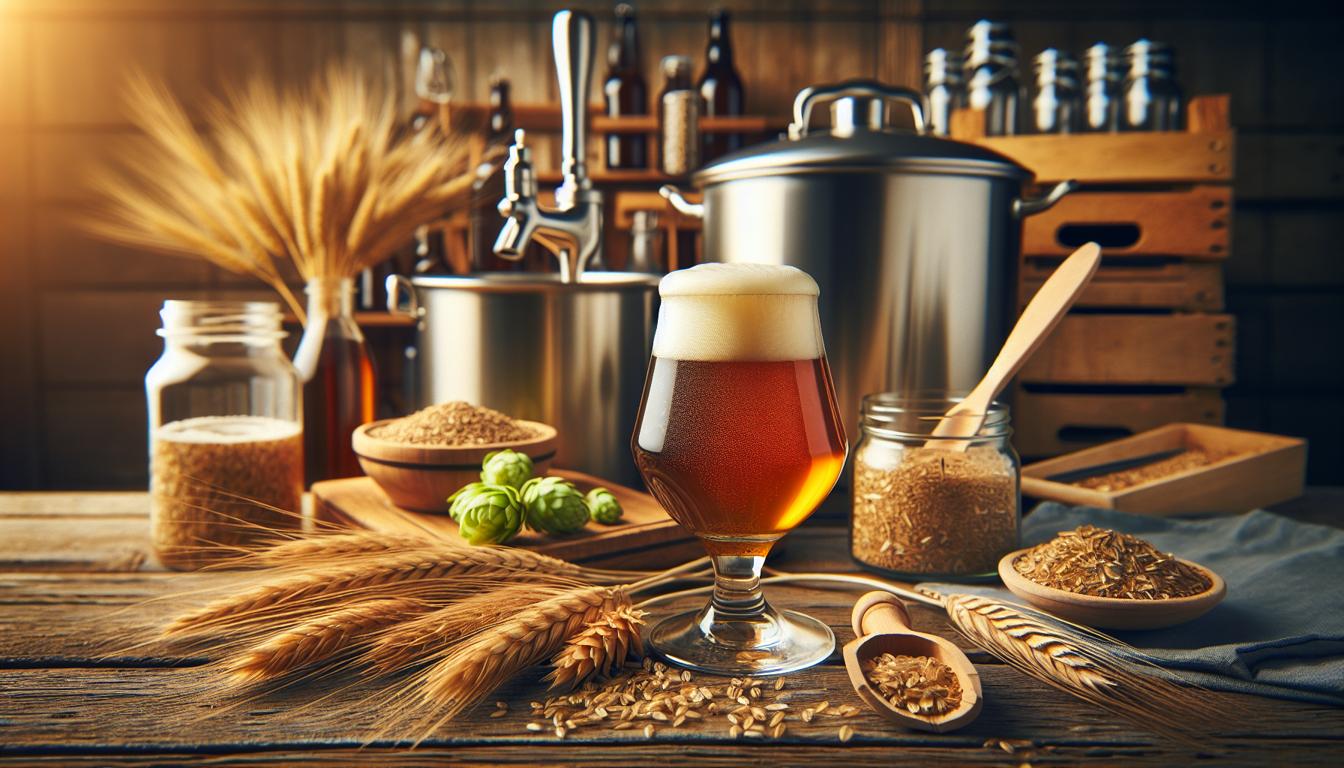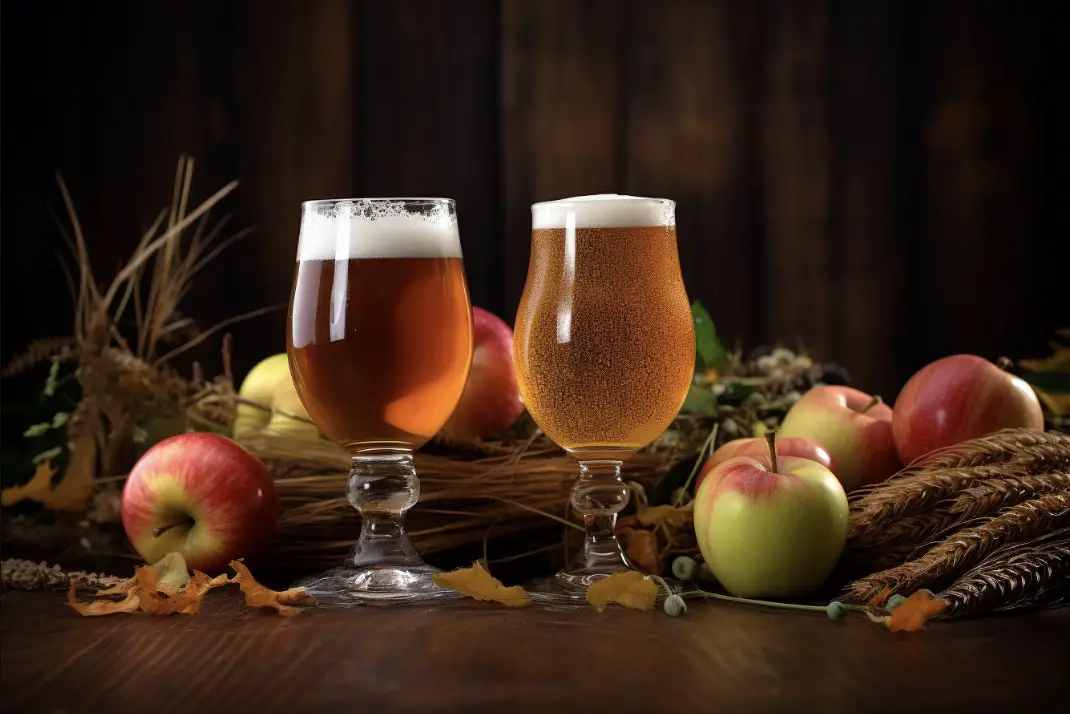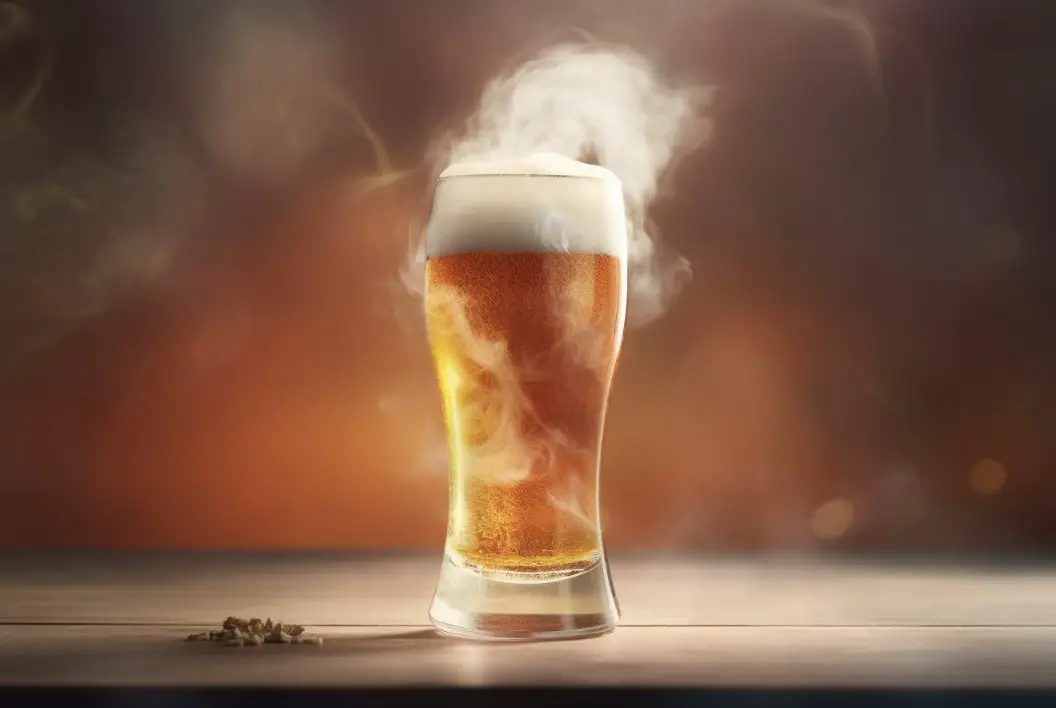The Belgian IPA, also known as the Belgian India Pale Ale, is a relatively new beer style that combines the hop-forward characteristics of an American IPA with the yeast-driven flavors and aromas of a Belgian ale. This style originated in the early 2000s when American craft brewers began experimenting with Belgian yeast strains in their IPAs, resulting in a unique fusion of flavors and aromas.
The story goes that a group of American brewers, who were passionate about both traditional Belgian beers and hoppy American IPAs, decided to create a beer that would bridge the gap between the two styles. They wanted to capture the fruity esters and spicy phenols of Belgian yeast, while still showcasing the bold hop character that American IPAs are known for. The result was the Belgian IPA, a beer that combines the best of both worlds.
Key Characteristics
The Belgian IPA is characterized by its complex flavor profile, which combines the fruity, spicy, and sometimes earthy notes of Belgian yeast with the citrusy, piney, and resinous hop flavors of an American IPA. The aroma is often a delightful blend of tropical fruits, citrus, and floral notes, with a hint of Belgian yeast character.
In terms of appearance, the Belgian IPA is typically golden to amber in color, with a moderate to high level of haze. The head is usually dense and creamy, with good retention. The carbonation is moderate to high, giving the beer a lively effervescence.
On the palate, the Belgian IPA is a harmonious balance of malt sweetness, hop bitterness, and yeast character. The malt backbone provides a solid foundation for the hops to shine, while the yeast adds layers of complexity. The finish is typically dry, with a lingering bitterness that invites another sip.
Brewing the Perfect Belgian IPA
Now that we have a good understanding of what makes a Belgian IPA unique, let’s dive into the brewing process. Brewing a great Belgian IPA requires attention to detail and a careful balance of ingredients. Here’s a step-by-step guide to help you brew the perfect Belgian IPA:
Step 1: Recipe Design
Start by selecting your ingredients. For the malt bill, you’ll want to use a blend of base malts, such as Pilsner malt and Belgian pale malt, to provide a clean, crisp backbone. You can also add a small percentage of specialty malts, such as aromatic malt or biscuit malt, to add complexity and depth of flavor.
Next, select your hop varieties. American hops are typically used in larger quantities to achieve the desired hop-forward character. Look for hops with tropical fruit, citrus, and piney notes, such as Citra, Amarillo, or Simcoe. You can also use some traditional European hop varieties, such as Saaz or Styrian Goldings, to add a touch of earthiness and spice.
Lastly, choose your yeast strain. Belgian yeast strains are known for their ability to produce fruity esters and spicy phenols. Look for a strain that complements the hop character of your beer, such as a Belgian Ale yeast or a Belgian Witbier yeast. Experimentation is encouraged, as different yeast strains can produce different flavor profiles.
Step 2: Mash and Sparge
Once you have your ingredients, it’s time to start the brewing process. Begin by mashing your grains at a temperature range of 148-152°F (64-67°C) for 60-90 minutes. This will convert the starches in the malt into fermentable sugars, providing food for the yeast during fermentation.
After the mash, sparge the grains with hot water to extract as much sugar as possible. Aim for a pre-boil gravity of around 1.060-1.070, as this will provide a good starting point for the fermentation process.
Step 3: Boil and Hop Addition
Once you’ve collected your wort, bring it to a boil and add your hops. For a Belgian IPA, you’ll want to focus on hop additions during the boil. Start with a bittering addition at the beginning of the boil, aiming for an IBU range of 40-60. This will provide a solid bitterness to balance the malt sweetness.
Next, add your flavor and aroma hops. These can be added in multiple additions throughout the boil, with the majority of the hops added in the last 10-15 minutes. This will help preserve the delicate hop aromas and flavors, while still extracting bitterness.
Step 4: Fermentation
Once the boil is complete, cool your wort and transfer it to a sanitized fermenter. Pitch your yeast, making sure to rehydrate it according to the manufacturer’s instructions. Ferment at a temperature range of 68-72°F (20-22°C) for the first few days, allowing the yeast to produce the desired esters and phenols.
After the initial fermentation, you can raise the temperature slightly to encourage further yeast activity and flavor development. This is known as a “diacetyl rest” and can help reduce any buttery off-flavors that may be present.
Step 5: Dry Hopping and Conditioning
Once the fermentation is complete, you can add dry hops to enhance the hop aroma. This can be done by adding whole leaf or pellet hops directly to the fermenter. Aim for a dry hop addition of around 1-2 ounces per 5 gallons (28-56 grams per 19 liters) of beer. Let the hops steep for 3-5 days, then remove them from the fermenter.
After the dry hopping is complete, you can transfer the beer to a secondary fermenter or keg for conditioning. Allow the beer to condition for at least 2-4 weeks, as this will help the flavors meld together and the yeast to clean up any off-flavors.
Key Points to Remember
Brewing a Belgian IPA can be a rewarding experience, but it does require attention to detail and a careful balance of ingredients. Here are some key points to remember when brewing this style:
- Select a blend of base malts and specialty malts to provide a clean, crisp backbone with depth of flavor.
- Use American hops for a hop-forward character, and traditional European hops for added complexity.
- Choose a yeast strain that complements the hop character and adds fruity esters and spicy phenols.
- Mash at a temperature range of 148-152°F (64-67°C) for 60-90 minutes to convert starches into fermentable sugars.
- Add hops throughout the boil, with the majority added in the last 10-15 minutes for flavor and aroma.
- Ferment at a temperature range of 68-72°F (20-22°C) to encourage yeast activity and flavor development.
- Consider a diacetyl rest to reduce any buttery off-flavors.
- Dry hop with 1-2 ounces per 5 gallons (28-56 grams per 19 liters) of beer to enhance hop aroma.
- Condition the beer for at least 2-4 weeks to allow flavors to meld together and yeast to clean up off-flavors.
By following these guidelines and experimenting with different ingredients and techniques, you’ll be well on your way to brewing a delicious Belgian IPA that showcases the best of both traditional Belgian beers and hoppy American IPAs. Cheers to the marriage of tradition and innovation!





Leave a Reply
You must be logged in to post a comment.